

The Easiest Ways To Fix Common Windows 11 Battery Drain Problems
source link: https://www.slashgear.com/1045838/the-easiest-ways-to-fix-common-windows-11-battery-drain-problems/
Go to the source link to view the article. You can view the picture content, updated content and better typesetting reading experience. If the link is broken, please click the button below to view the snapshot at that time.

The Easiest Ways To Fix Common Windows 11 Battery Drain Problems
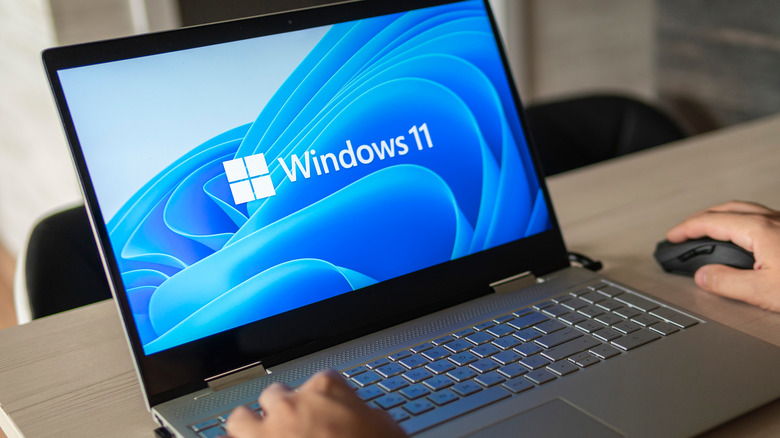
If you own a Windows 11 tablet or laptop and are the type of person who brings your device everywhere so you can work on the go, you probably also have varying levels of battery anxiety, especially when you don't have access to a power outlet or a portable battery charger. Unfortunately, as is the case with any gadget running on battery power, the act of juggling a myriad of tasks and processes running all at once can cause serious issues with a computer battery's overall capacity.
In a time when working remotely is the new normal, having a machine that smoothly runs as advertised without suddenly conking out is definitely a requirement of sorts. Sure, this isn't a concern if you work at a desk all day with your laptop plugged in, but if you make working outside of the house a habit, you can leverage some features built into Windows 11 to keep your battery running as long as possible, and tweaking them is a good way to fix any ongoing battery drain issues you may be experiencing.
Switch to Battery Saver mode

According to Microsoft, when Windows 11's battery-saving feature is enabled, the PC stretches out the device's battery runtime by shutting down power-hogging tasks and processes that may not be crucial at that moment, like certain built-in Windows app syncing features, updates, and other apps that may be left open but that are not currently in use. By default, Battery Saver is switched off and can only be enabled if the computer is unplugged. Here's how to turn it on:
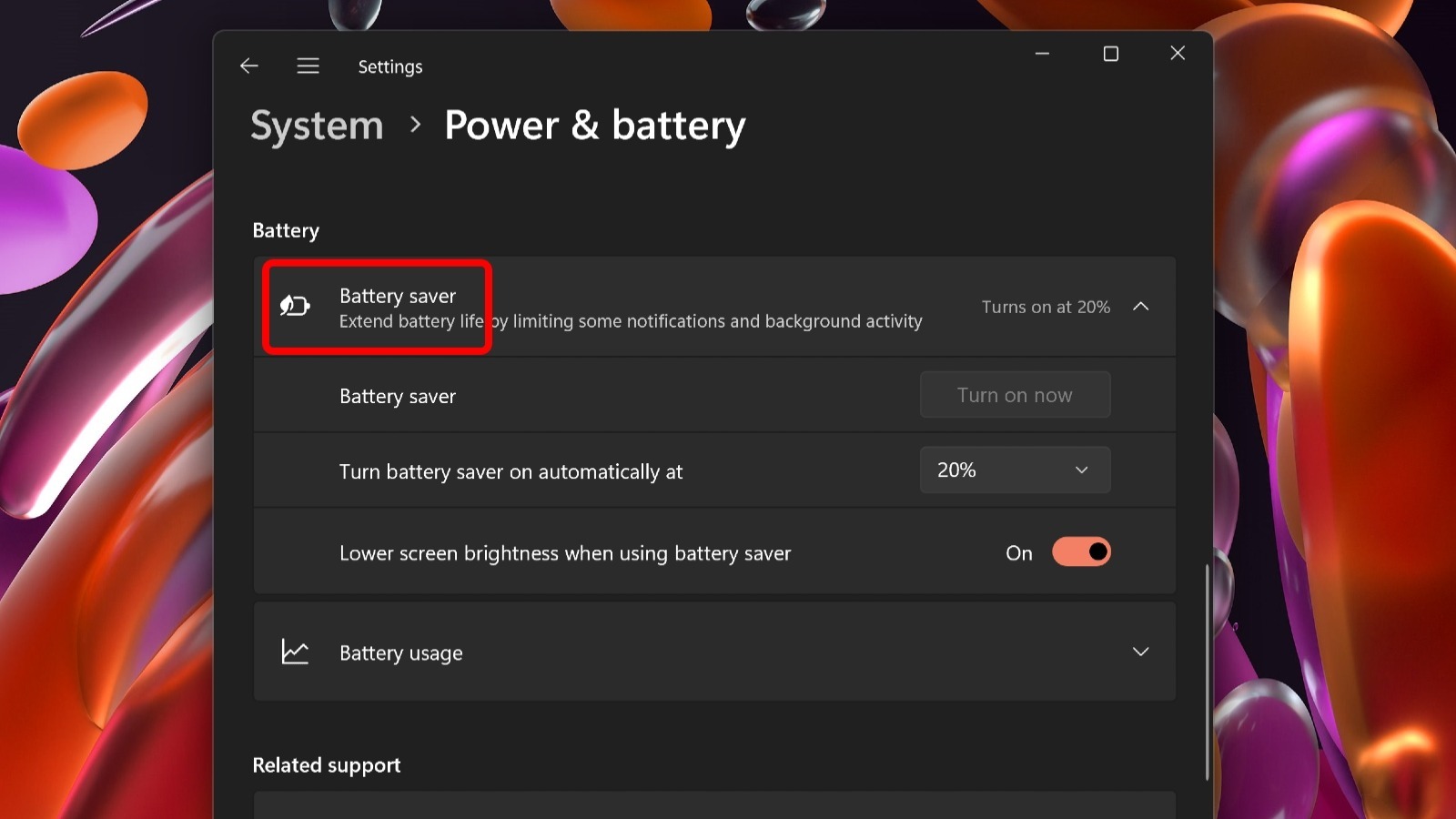
- Click the Windows Start button, then go to Settings by clicking the gear icon.
- Click the Power & Battery option within the Settings app.
- Click on the Battery Saver option, then click the button that says "Turn on now."
- Select the battery percentage threshold beyond which Battery Saver will automatically turn on.
You can also toggle on or off the feature that lowers your laptop's screen brightness in Batter Saver mode to help reduce battery drain. This same Settings menu also provides other power and battery features and information, including a log of your laptop's battery charge cycles, which power mode your PC is operating in, and which apps use the most battery power when the machine is unplugged.
Run Windows 11's built-in troubleshooter
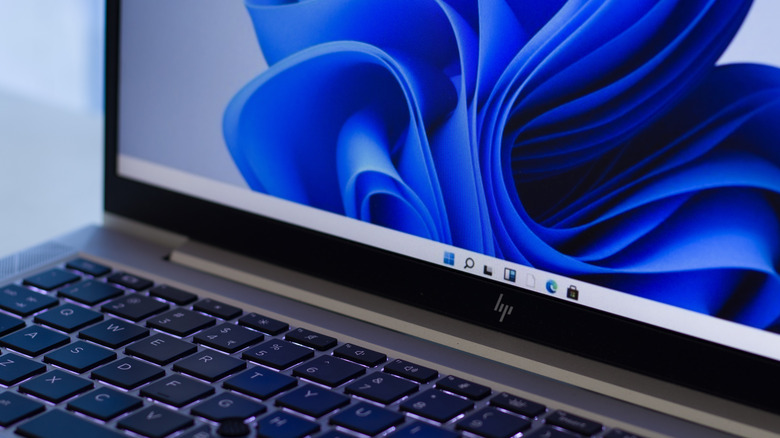
Windows 11 has a troubleshooting program that can offer quick power fixes by diagnosing potential battery issues and offering battery-saving solutions through settings changes. This same tool is also useful for finding and fixing other issues you may be having with your PC, as well.
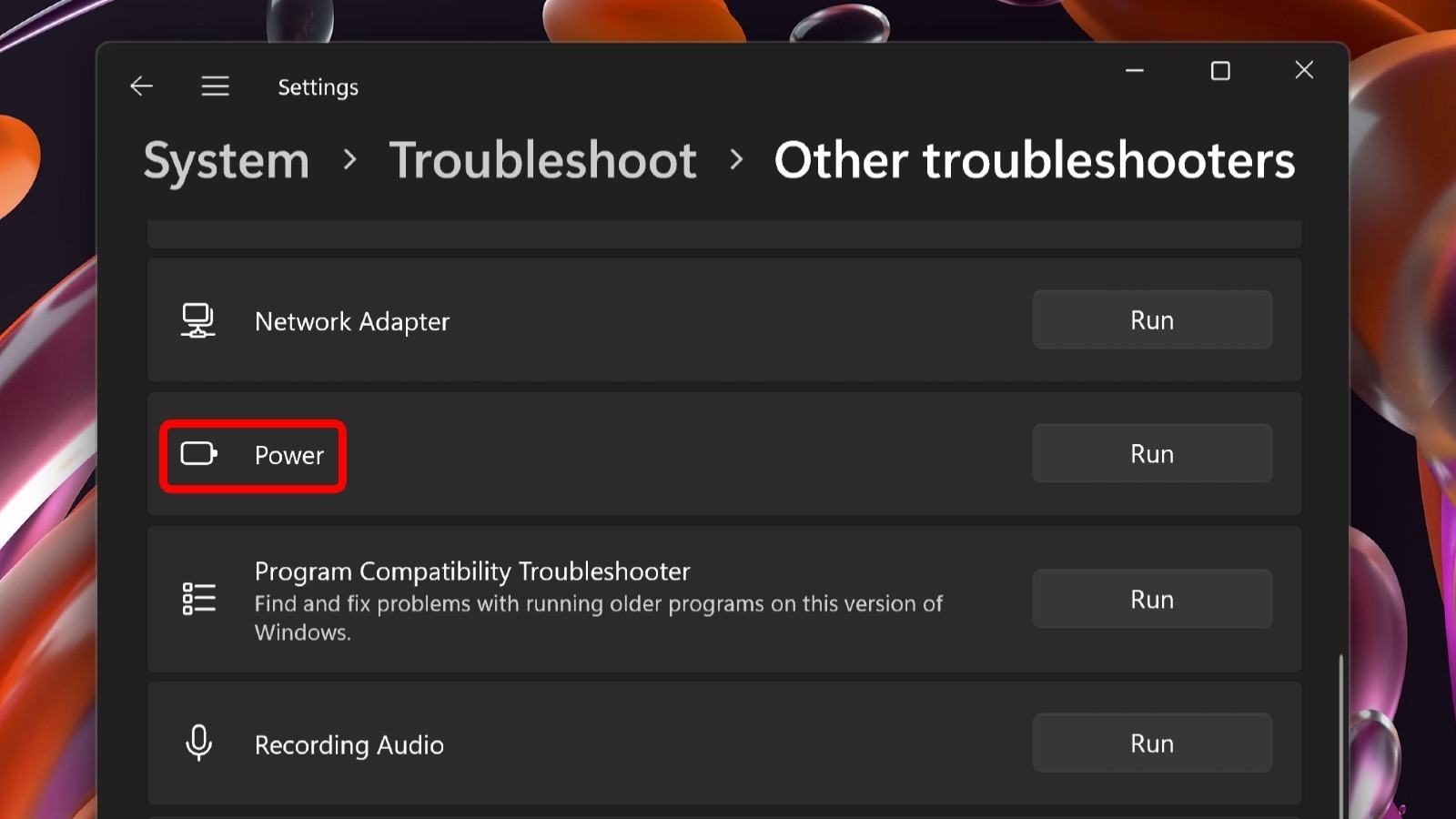
- Click on the Windows Start button, then open Settings by clicking the gear icon.
- Scroll down and click the Recovery option.
- Within the new menu that appears, click "Fix problems without resetting your PC."
- Select the Other Troubleshooters option.
- Scroll down and click the Run button next to the Power option.
Depending on whether a power problem actually exists on your computer, it may take a while for the program to detect issues. Once the process is done, you'll have an opportunity to make changes if they are necessary or send feedback back to Microsoft regarding your experience using the troubleshooter. You can also click on the "View detailed information" link to review which potential battery issues were checked and detected in your device.
Turn on Sleep mode before leaving your desk
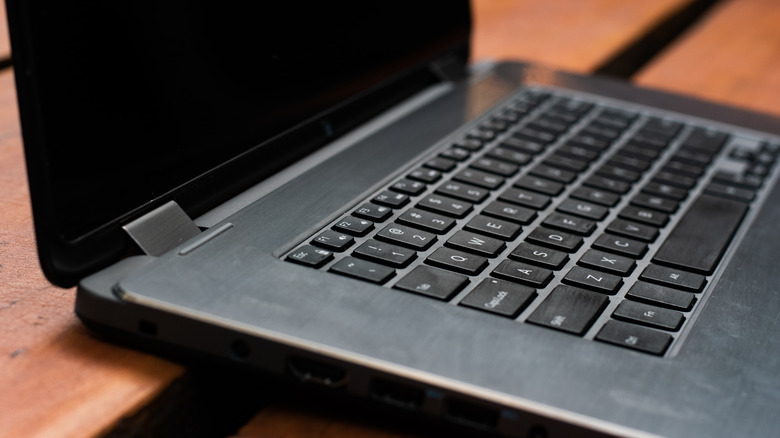
The next battery-saving feature to explore is Windows 11's Sleep function. Restarting a computer after shutting it down completely can take some time to complete. Sleep mode allows you to quickly wake up your inactive device and resume app use and tasks you may have left open and running. Once you're finished with your tasks, putting the laptop back into Sleep mode will help preserve your remaining battery charge.
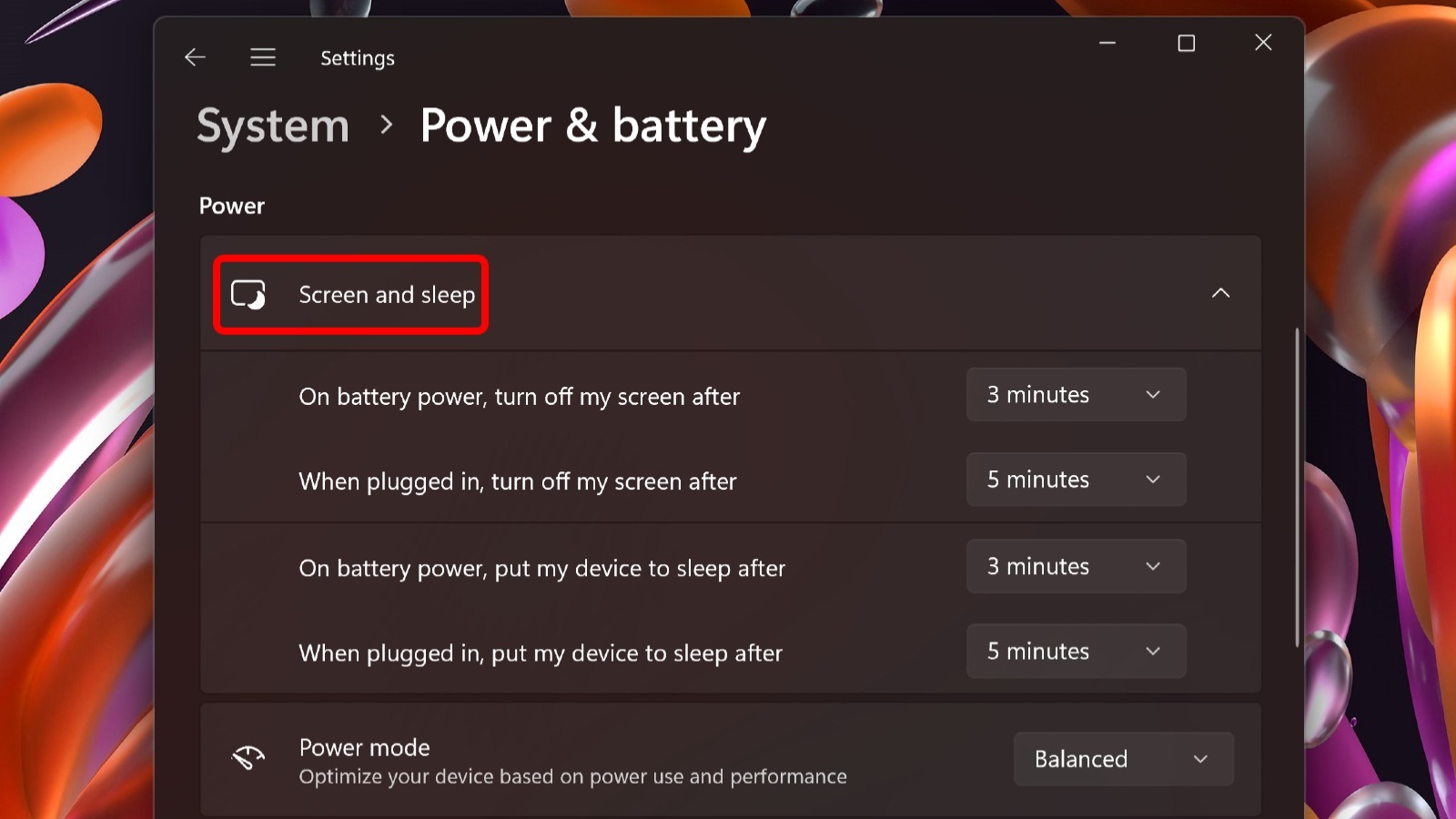
- Click the Windows Start button, then open Settings by clicking the gear icon.
- Scroll down and click on the Power & Battery option.
- Under the Screen and Sleep menu, use the drop-down menus to choose how long your PC will stay awake on battery power before Windows puts it to sleep.
You can set the Sleep function to kick in after durations ranging from one minute to five hours. Do not pick "Never" from the list, as this is a surefire way of unnecessarily using up precious battery power while your computer is unplugged. Pick a time limit that's long enough to cover breaks you need to take as well as errands you need to do off-keyboard.
Pick a suitable power plan
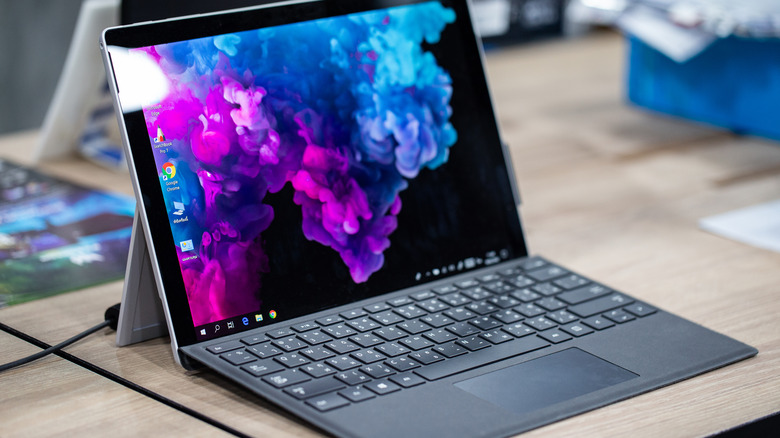
Computers require a different combination of settings — also known as power plans — to run efficiently when plugged in and when running on battery power. To ensure that your PC's hardware behavior and system settings dynamically switch to a more battery-friendly option when you're away from your desk, you can adjust your PC's power plan, though it requires heading into Control Panel to do so.
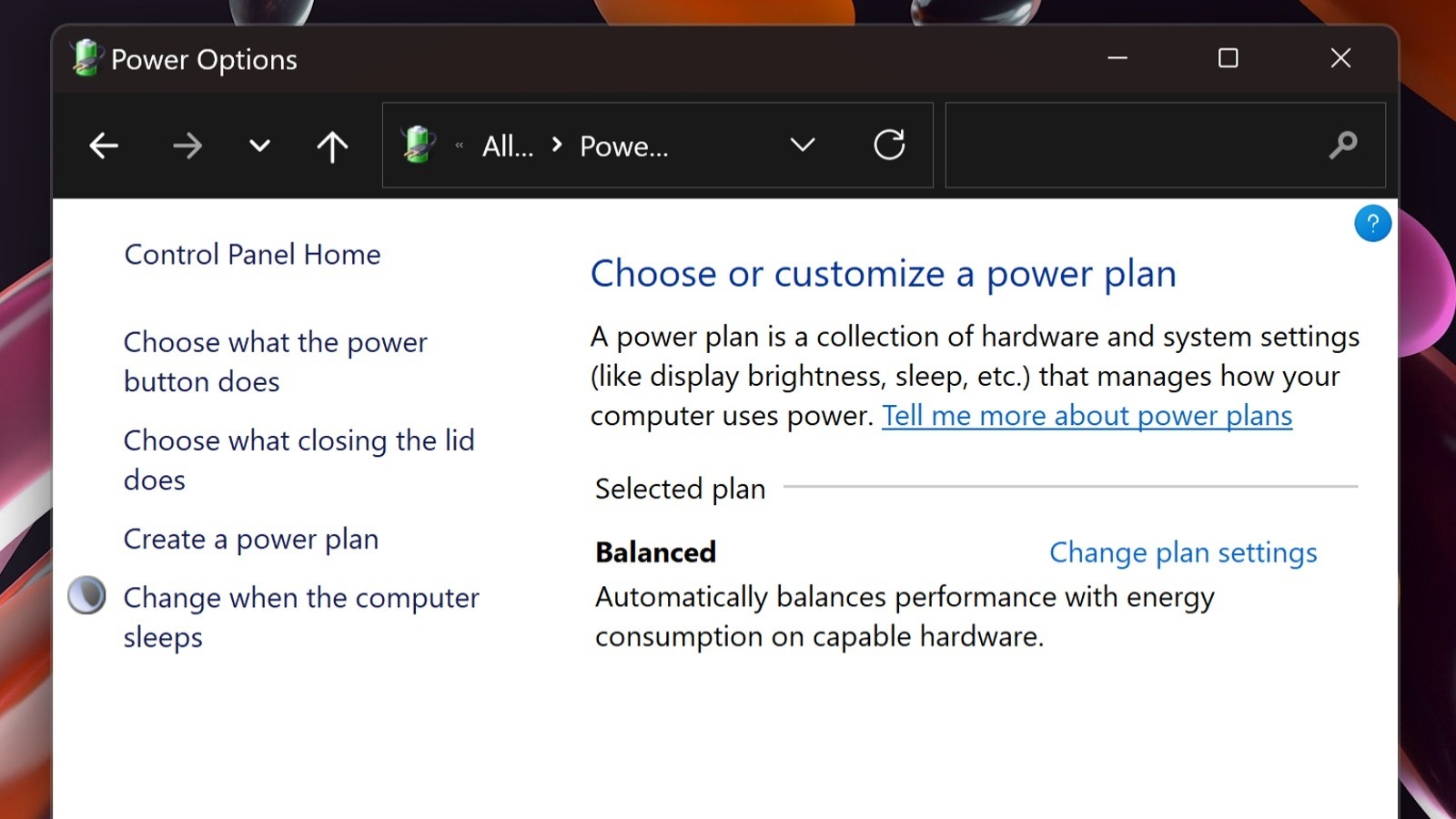
- Click the magnifying glass icon in the Windows 11 taskbar.
- Type Control Panel in the search field and press Enter on your keyboard.
- In the Control Panel window that opens, click the drop-down menu next to "View by" and select the "Large icons" option.
- Click the Power Options setting.
- Under "Choose or customize a power plan," pick "Balanced" or any option that says it "Automatically balances performance with energy consumption on capable hardware."
- Click on "Change plan settings."
- Next to "Put the computer to sleep" under the "On battery" column, set a shorter duration, then click "Save changes" to finalize.
- Click Apply to make the changes, then click OK to save the changes.
Windows 11 allows users to customize power plans that will automatically activate when applicable, such as one that kicks in whenever you unplug your laptop and that turns off when you plug the machine back in. Picking the right plan helps ensure that your machine's performance is evenly matched with the amount of power currently available.
Adjust your computer display's brightness and HDR settings

When you have your computer screen's brightness turned up, it will consume quite a bit of power — not to mention the risk of eyestrain over time. For this reason, consider lowering the display brightness to reduce the drain on your battery; you can, of course, turn the brightness back up once you're connected to a wall outlet. You can also change the screen's HDR and refresh rate settings to help reduce battery drain.
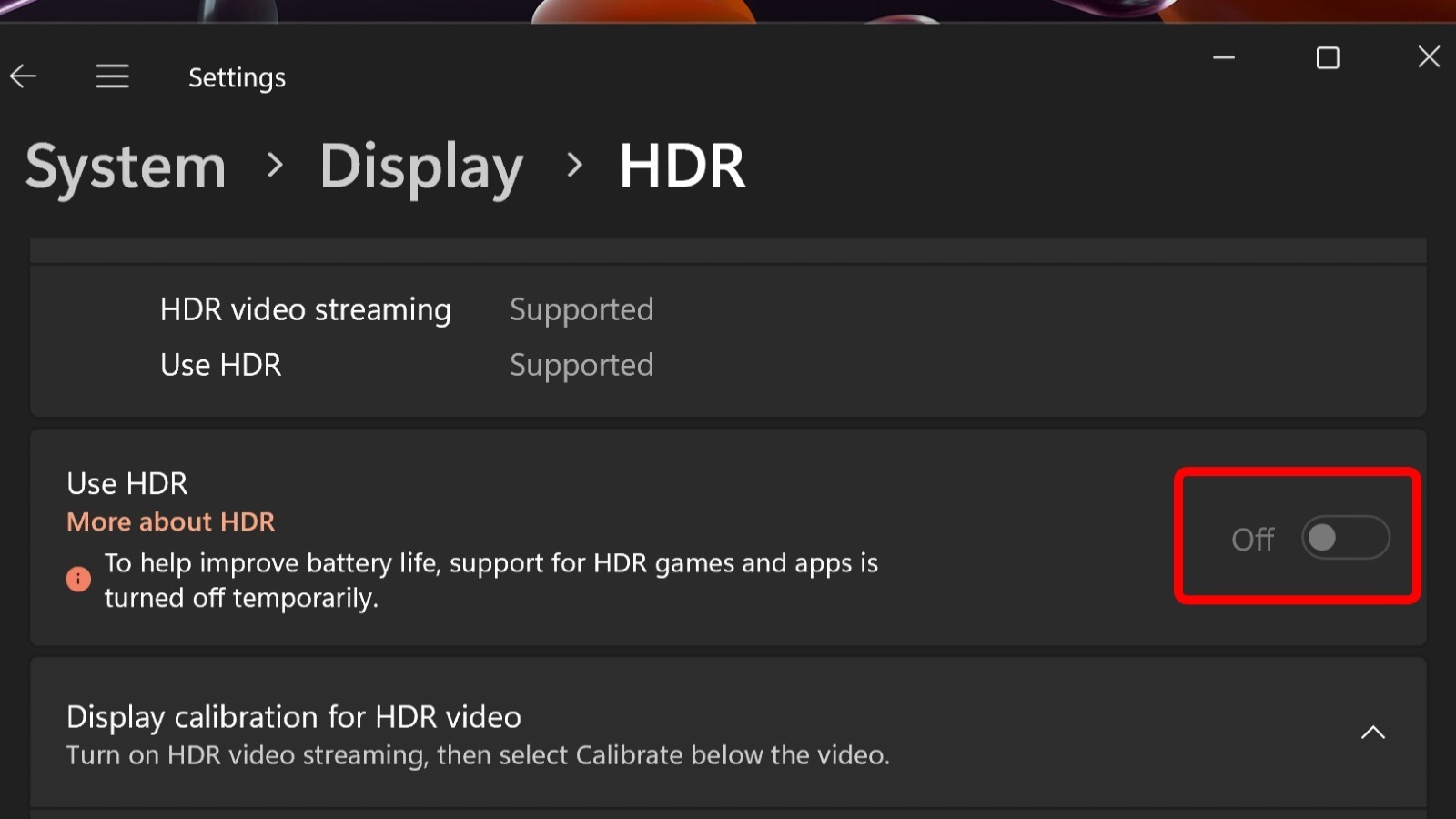
- Click the Windows Start button, then open Settings by clicking the gear icon.
- Scroll down and select the Display option.
- Adjust the Brightness slider until your screen is dim, but not too dim to see.
- Beneath the Brightness slider, click on the HDR option to open its settings.
- If your laptop is already in a balanced or battery saver mode, HDR will likely be disabled by default. If it is turned on, however, you can manually turn it off to save battery life by clicking the toggle switch.
Additionally, you can opt for a lower screen refresh rate, which would require less power. Press the back button until you're on the Display page again, click "Advanced display settings," then choose the lowest option available under "Refresh Rate." Do note that doing this may reduce the smoothness of motion shown on your screen.
How To Fix Windows 11's Most Common Issues
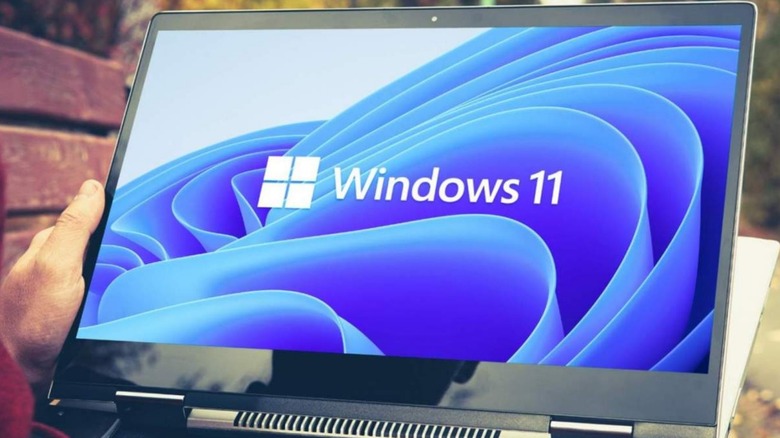
Arguably, Microsoft jumped the gun with Windows 11, which had its share of issues and bugs at launch. Some of them were fixed in consequent updates, while others persist even today. Window 11 cannot be called flawless after months of tinkering around since some issues still persist and are reported by users on forums from time to time.
A few bugs that have come up are a result of settings malfunction at a deeper level while some prop-up due to anomalies in the software code. Earlier we narrowed in on the Windows 11 problems and their easy fixes. Now we've dug up more common issues that have been bugging users lately, and detailed solutions to make the overall user experience on your Windows system smoother for you.
Windows 11 slowing down SSD
Some users who have upgraded from Windows 10 to Windows 11 are experiencing reduced performance with their computers' solid-state drives (SSD). Reddit communities and Microsoft's support forum are filled with complaints of the upgrade affecting SSD write speeds. According to BetaNews, the drop in performance has been verified by benchmark tests like CrystalDiskMark. The results show reduced random write speed approaching 50 percent that of earlier performance with Windows 10 with the same hardware.
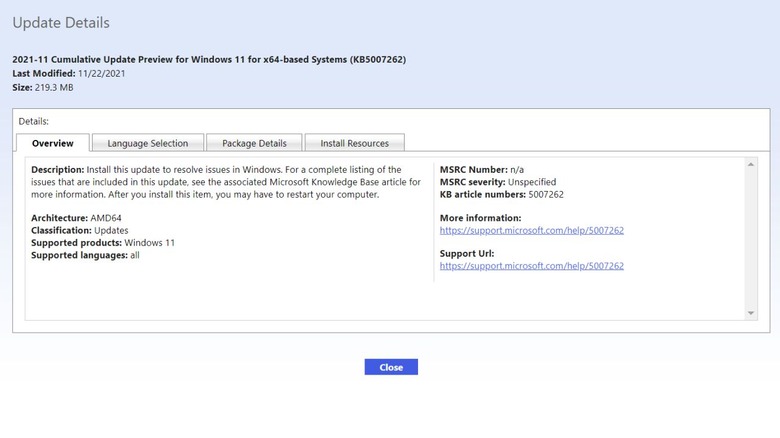
Thankfully there's a very easy fix to this head-scratching problem courtesy of an official patch from Microsoft: the KB5007262 patch. The update will not be automatically pushed out to all the Windows 11 systems – so it'll have to be installed manually. Anyone experiencing the issue with SSD speed can head over to the Microsoft Update Catalog and download the patch. The description of the update says the update patches the issue with NVMe, SSD, and hard drive performance which occurs due to NTFS USN journaling being enabled. Apparently, the USN journal on disk C: is enabled by default.
Error 0x80070070 while upgrading
For users upgrading from Windows 10 to the new operating system, an irksome error can be a roadblock. We are talking about the error code 0x80070070, which occurs when there isn't adequate space to install the required setup on your system. It pops-up mostly as an error code with string 0x80070070 – 0x50011, 0x80070070 – 0x50012, or 0x80070070 – 0x60000. Rather than removing apps and software to make up for space, an easy fix (via Windows Central) can make things easier for you.
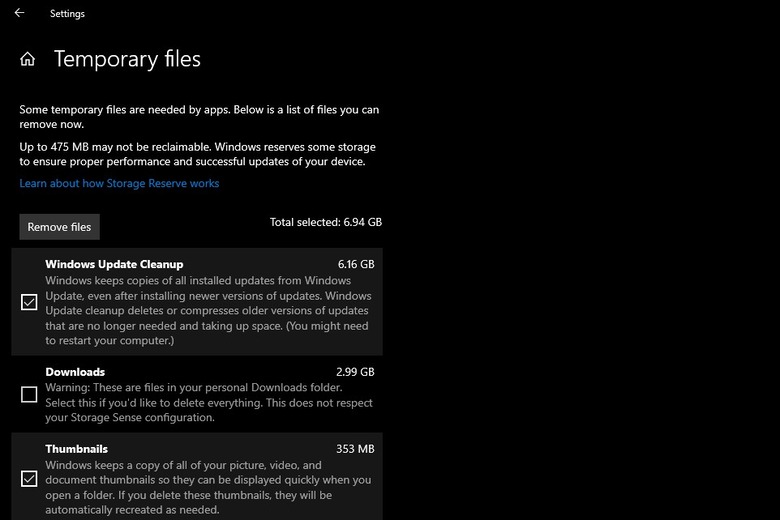
Removing temporary files from your system will (quite possibly) deliver the space you'll need to continue operating your PC. To remove temporary files from your PC, go to Settings, click on System and then click on Storage. Here you'll find a section called Temporary files. Clicking on it further opens up a section where you can choose which temporary files to get rid of. Make sure you do not remove the "Windows Setup temporary files" or "Windows ESD installation files", these are upgrade files of the OS.
Google Chrome not working
If you're unable to use Chrome on Windows 11, this could be due to a wide number of reasons. It could be due to compatibility issues, corrupted files, or conflicting app behavior. To troubleshoot, you can restart your system and check back on Chrome to see if it is working fine. Else head over to the Google Chrome icon, right-click on it and select Properties. Then click on the Compatibility tab and select Run compatibility troubleshooter. At your own risk, you may also want to try to disable any antivirus program you have installed on the system – or whitelist Google Chrome from its settings.
If this doesn't fix the problem, you may need to delete the folder containing the profile data for Google Chrome. To do this, press Windows key + R to open the Run dialog box; here enter "%USERPROFILE%\AppData\Local\Google\Chrome\User Data" and trace the Default folder and create a copy of it to backup files. Then delete the folder. No success yet? You may have to flush the DNS cache (via Guiding Tech) by opening Terminal with the shortcut Window key + X. Here type the command "ipconfig/flushdns" and press Enter.
If the issue persists, you may be required to reset the network setting by pressing the Windows key + I shortcut. In the window select "Network & Internet" and click on the Advance network settings. Under the "More Settings" tab select the Network reset option.
Search not working correctly
Windows 11 has a strange bug that freezes the search bar, resulting in your inability to type addresses or search queries. Users have also reported being unable to see files and apps when typing in the search bar. If none of the obvious fixes such as restarting the PC or Search and Indexing troubleshooter have worked for you, then the first option is to restart the SearchHost.exe manually. To do this, open the Task Manager by pressing Ctrl+Alt+Del and look for the "SearchHost.exe" file. Then select End Task and click on End Process.
Alternatively, you can restart the Windows Search service (via Make Use of) by pressing Win+R to open the Run dialog box. Thereafter enter "services.msc" to open the Services console, and seek out Windows Search. Double click on it to launch the Properties window. Now click the Stop button and then click on Start.
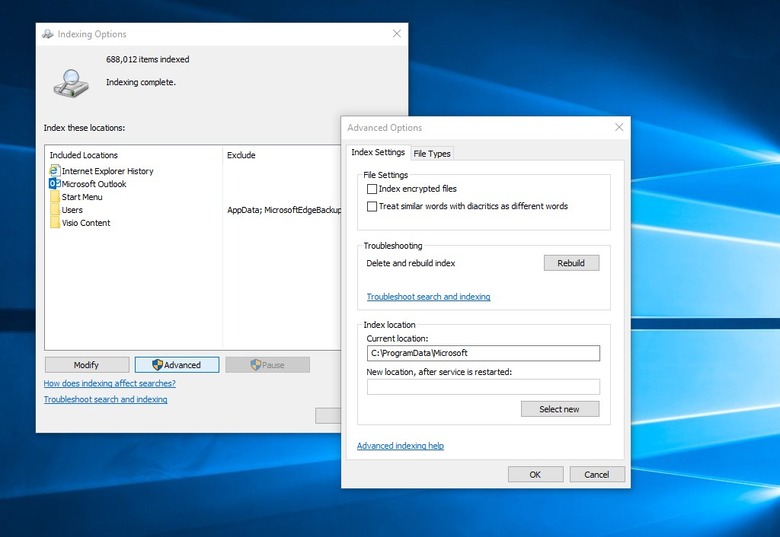
For users who are having difficulty with the search queries, the best option is to rebuild the search index. Open Settings by pressing Win+I, click on Privacy & Security, and then on the right pane select Searching Windows. In the window that opens, select Advanced indexing options at the bottom, thereafter, select the Advanced button. Here click the Rebuild option; this will fix the indexing issue and the files or apps should now show up as usual.
Color rendering bug
Some users have been reporting a very strange bug (via Windows Latest) with an upgraded Windows 11 package that renders colors on HDR screens incorrectly. This is utterly frustrating for editors or professionals who have to frequently use third-party image editing software. This is most noticeable when white colors are shaved or white or lighter backgrounds are added. The offset hues look bright yellow when they are supposed to be pure white.
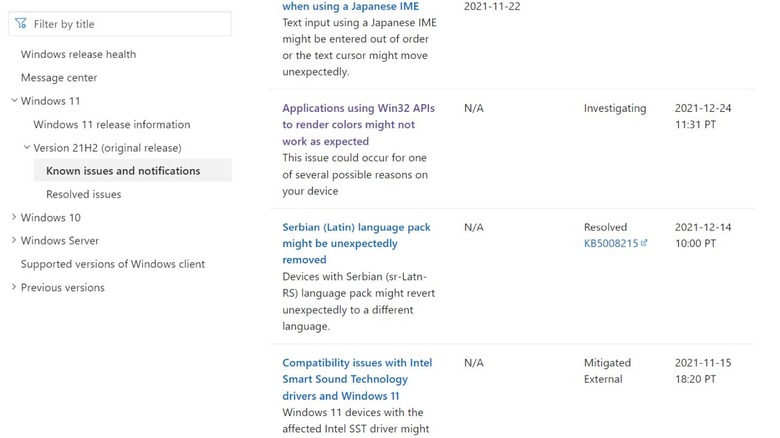
Microsoft has publicly acknowledged this bug, detailing the reason. It happens when the Win32 APIs return unexpected information or errors under a certain set of conditions on a few displays.
Microsoft has emphasized that the bug does not affect all color profile management programs, and claims that they are working on the color issue affecting the Windows 11 version 21H2. The fix is expected to roll out in late January. Users who are experiencing this issue may have one choice: remain patient and install the Windows update patch as soon as it arrives. Microsoft suggests (in official documentation linked above) that they expect an update and fix by "late January."
Recommend
About Joyk
Aggregate valuable and interesting links.
Joyk means Joy of geeK